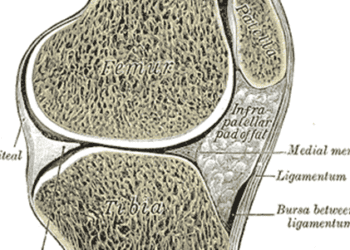Subclinical hyperthyroidism associated with hip and any fracture risk
1. Subclinical hyperthyroidism was found to be associated with an increased risk of hip and any fractures in this meta-analysis, but was not associated with spine or nonspine fractures.
2. Subclinical hypothyroidism was not associated with hip, any, spine, or nonspine fracture risk in this meta-analysis.
Evidence Rating Level: 1 (Excellent)
Study Rundown: There is an established association between hyperthyroidism and the risk of osteoporosis and fractures. However, the relationship between subclinical thyroid dysfunction, defined as an abnormal thyroid stimulating hormone (TSH) with a normal free thyroxine (FT4), and fracture risk is less well understood. This study pooled data from 13 prospective studies (70 298 participants) to determine whether subclinical thyroid dysfunction was associated with hip fractures, any fractures, spine fractures, and nonspine fractures. Subclinical hyperthyroidism was found to be associated with hip fracture and overall fracture risk, but not spine or nonspine fracture risk. Subclinical hypothyroidism was not associated with fracture risk in this study.
Strengths of this study include the large sample size, thorough analysis of data from each included study, and the use of individual-level data. The participants in this study were predominantly Caucasian females, which may limit the generalizability of the findings. Another weakness of the study is the fact that all participants’ thyroid status was determined at the outset of the included studies and changes would not have been known. Further studies should be performed to understand the clinical implications of the association between subclinical hyperthyroidism and fracture risk and the potential benefits of treating individuals with subclinical hyperthyroidism.
Click to read the study, published today in JAMA
Relevant Reading: Subclinical thyroid dysfunction and incident hip fracture in older adults.
In-Depth [meta-analysis]: This study combined data from 13 prospective studies to perform a meta-analysis to assess the relationship between subclinical thyroid dysfunction and fracture risk in 70 298 participants. Thyroid levels were stratified as euthyroid (TSH 0.45-4.49 mIU/L), subclinical hyperthyroidism (TSH <0.45 with normal FT4 levels), and subclinical hypothyroidism (TSH 4.50-19.99 mIU/L, with normal FT4). The occurance of hip fracture was the primary outcome, while fractures of any location, spine, and nonspine were the secondary outcomes. Subclinical hyperthyroidism was found to be associated with hip fracture risk (HR 1.36, 95%CI 1.13-1.64) and any fracture risk (HR 1.28, 95%CI 1.06-1.53), but not nonspine fractures (HR 1.16, 95%CI 0.95-1.41) or spine fractures (HR 1.52, 95%CI 0.93-2.45). The risk of hip, any, and spine fracture was higher among participants with lower TSH levels. There was no association between subclinical hypothyroidism and fracture risk in this study.
Image: PD
©2015 2 Minute Medicine, Inc. All rights reserved. No works may be reproduced without expressed written consent from 2 Minute Medicine, Inc. Inquire about licensing here. No article should be construed as medical advice and is not intended as such by the authors or by 2 Minute Medicine, Inc.







